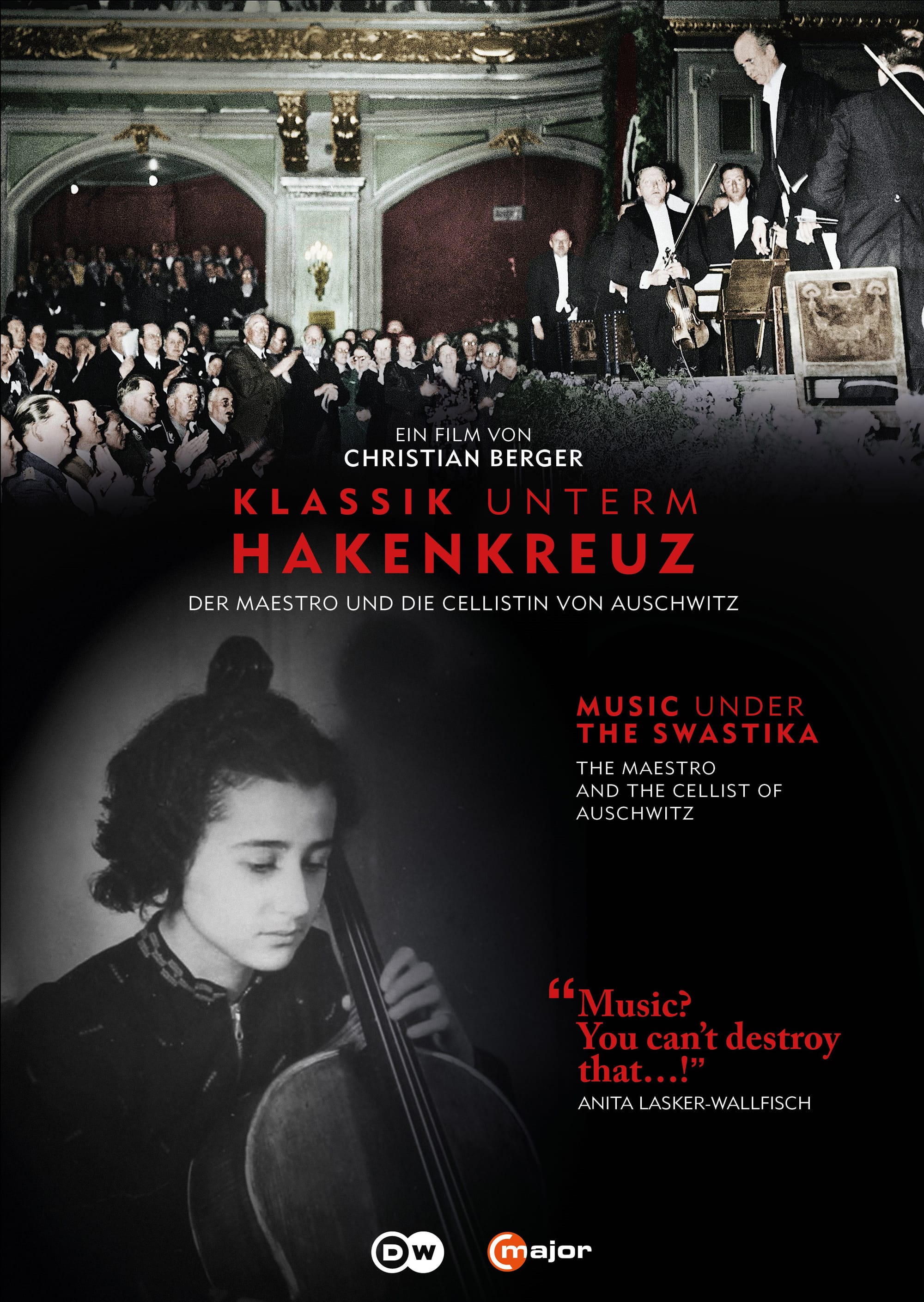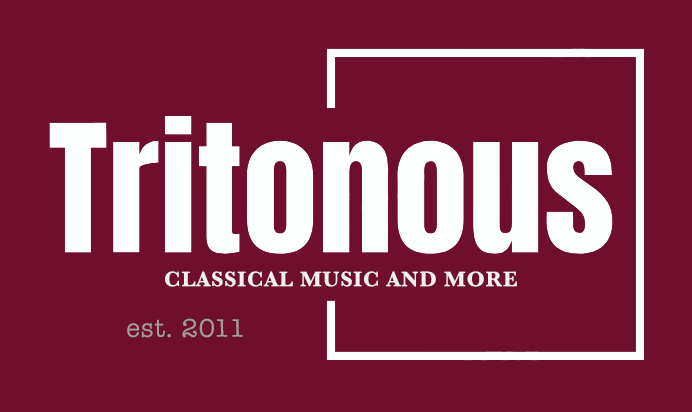Music? You can’t destroy that … (Anita Lasker-Wallfisch)

Christian Berger’s film, Musik unterm Hakenkreutz, a fascinating and disturbing documentary in equal parts, is dominated by the figure of Anita Lasker-Wallfisch (born 1923), who endured imprisonment in Breslau, Auschwitz and Belsen. We hear her first in a BBC broadcast from 1945, then as she is in current times. She speaks throughout with great honesty and poignancy; the present is counterpointed with images of the liberation of the camps by Allied forces. Lasker-Wallfisch was cellist of the infamous Women’s Orchestra of Auschwitz and was 97 at the time of filming.
As the story of the growth of the Nazis is told, one gets a feeling of the way they controlled the music around them, particularly through the figure of Goebbels and his Reich Chamber of Culture (“Reichskulturkammer”). The importance of music to both Goebbels and Hitler is explored – and we both Richard Strauss and Furtwängler are brought into the equation – Furtwängler was listed as a “musician gifted by God” and we see him conducting a furious performance of Strauss’ Till Eulenspiegel in a concert hall draped with Swastikas. Later, we hea the rarely-heard Festliches Praeludium (used as an introduction to the chapter on “Entatete Music”) and Krenek’s Jonny spilt auf (as prime example of the forbidden mixing of race in jazz).
Here’s Furtwängler conducting Till in 1930 – with the Berliner Philhrmoniker on a Grammophon release:
Werner Egk‘s Mein Vaterland, heard with massed chorus follows, a rare piece very much of its time. Here’s a rare performance conducted by Carl Woitschach:
It was Goebbels who ‘saved’ the Berliner Phiharmoniker – in the early 1930s in financial difficulties – by nationalising it and renaming it as a Reich Orchestra. But there were four Jewish members, including concertmaster Szymon Goldberg. Pressure was applied – all were absent by 1935. All four left Germany.
Obviously, Furtwängler receives much attention: there is a Beethoven 9 for the Führer’s birthday, with a massive Swastika apparent, in 1942 – previously Furtwängler had made excuses on health grounds. His relationship to the Nazi regime is, of course, a fascinating subject in itself …
The opportunity to see an animated Paul Hindemith in rehearsal is cherishable. The music of Hindemith was Furtwängler’s one stand against the regime (Goebbels found Hindemith too modern – and unfortunately Furtwängler lost his fight here). ‘Rehabilitated’ by Spring 1945 (we see not only Goebbels but Hitler himself in the audience), we see Furtwängler conducting in front of huge swastikas and portraits of Hitler – Norman Lebrecht suggests he was ‘morally degenerate’.
Raphael Wallfisch, Lasker’s grandson, is a regular interviewee, as is conductor Christian Thielemann (who basically says that listening to Furtwángler makes him feel like giving up conducting).
Furtwängler’s interrogation after the war – ‘why hadn’t he left Germany?’ – meant was classified as a ‘follower’ and was able to return to music. Archival footage shows him conducing the Overture to Meistersinger, a piece appropriated into Nazi ideology as a prime example of ‘Holy German Art’. Two of Furtwängler’s step-children are interviewed as part of this process.
The Jewish question is hardly shied away from: we see Goebbels in a speech suggesting that even in music all the Jews can be replaced – Lasker-Wallfisch gives her own reaction, powerful in its dignified restraint. She was spared death in the camps because of her talent – they needed a cellist, and her description of how she is recognised as a vital link in the camp’s musical life is thought-provoking indeed.
It is perhaps the archival films that have the most lasting impact: Berlin’s Brandenburg Gate draped with Swastikas (the ‘Hakenkreutz’ of the title), … over and above the value, perhaps, of Furtwängler in rehearsal (Schubert “Unfinished,” first movement). Norman Lebrecht is right to state Furwängler’s influence on conductors today, although greater insight comes from Daniel Barenboim in interview. Kathrin Ackerman, Furtwängler’s relative, suggests the great man was deeply involved with art of all types, but when it came to politics … perhaps he was less aware. Tobias Reichard (a musicologist from the Munich College of Music and theatre) ponders the place of Jews thin the Nazi machine.
Alma Rosé’s importance in Auschwitz-Birkenau is considered (and how in the film the wired fence is made to look like a string instruments’s fretwork is amazingly imaginative); and there is no shying away from detail. The infamous Dr Josef Rudolph Mengele and his experiments on human subjects are discussed, and we see SS doctor Mengele in the company of shire officers).
Back to music, and Barenboim describes becoming friends with Wagner’s composer’s grandson – and Wagner was the Führer’s favourite composer. We see Winifred Wagner in 1943 on film, declaring how they at Bayreuth embraced Nazi ideas; and we see Hitler at Bayreuth, arriving with his entourage at the Festival. Jewish artists were no longer welcome. By 1943, Furtwängler had conducted at Bayreuth six times. Hitler kept the Festival open during World War II (it had closed during WW1) so it could become a propaganda tool. Sven Friedricjh, director of the Wagner Museum in Bayreuth , suggests that at least superficially Wagner’s music meshes with Nizai ideology. Wagner’s writings are not shied away from – including Das Judendthum in die Musik.
How important music was to the Nazi structure is reflected in the fact that as late as 1944 the Funeral March from Götterdämmerung was recorded – even at a time when all funds were ostensibly being funnelled into the Nazi war effort. At Auschwitz alone, there were five orchestras – all other camps tended to have one each.
… which leads us to Theriesenstadt: we see the 1944 propaganda film The Führer donates a town to the Jews – that town indeed being Theriesenstadt, a small fortress town outside Prague (in Czech, Terezín) Here is hat film, complete:
.
Archival material is restored and often colonised. Moving more to the present, we see a Memorial Day concert in London, masterminded by Raphael Wallfisch and included Sylvie Bodorová’s Terezín Ghetto Requiem in which she uses a theme from the Verdi Requiem above which the singer sings a cantorial Jewish orthodox prayer – Shema Yisrael (the same one used in Schoenberg A Survivor from Warsaw):
Eventually. Anita Lasker moved to London. She is a founder member of the English Chamber Orchestra and married Peter Wallfisch. In 1996, she wrote her memoir. Furtwangler stayed in Germany until shortly before the end of the war (in 1936 he was offered the NYPO conductorship, bu refused). He moved to Switzerland in February 1945. After de-Nazification, started performing again in 1947 – and on the film we see part of the 1954 Salzburg Festival Don Giovanni (click here for the complete performance).
Hate is a poison, and in the end you only poson yourself,
(said Lasker in a speech to the Bundestag).
The music throughout is supremely well chosen, continually reminding us of its power and its redemptive strength: performances include Bach Double Concerto (Alma and Arnold Rosé, Biddulph), and Schönberg Verklärte Nacht, (Bamberg SO / Zagrosek, Naxos). Here’s the slow movement of the Bach:
This is a harrowing watch, but a rewarding one; Christian Berger has created a memorable film; Anita Lasker-Wallfisch provides a powerful thread. Recoommended.
The film is available on YouTube, but far better to have this on a bigger screen through speakers, if you ask me:
The DVD is available at Amazon here.
The cover image of Anita Lasker-Wallfisch is also used for her book, Inherit The Truth, 1939-1945 (at least fo my edition, via Gildes de la Mare Publishers Limited: the hyperlink is to Amazon).








